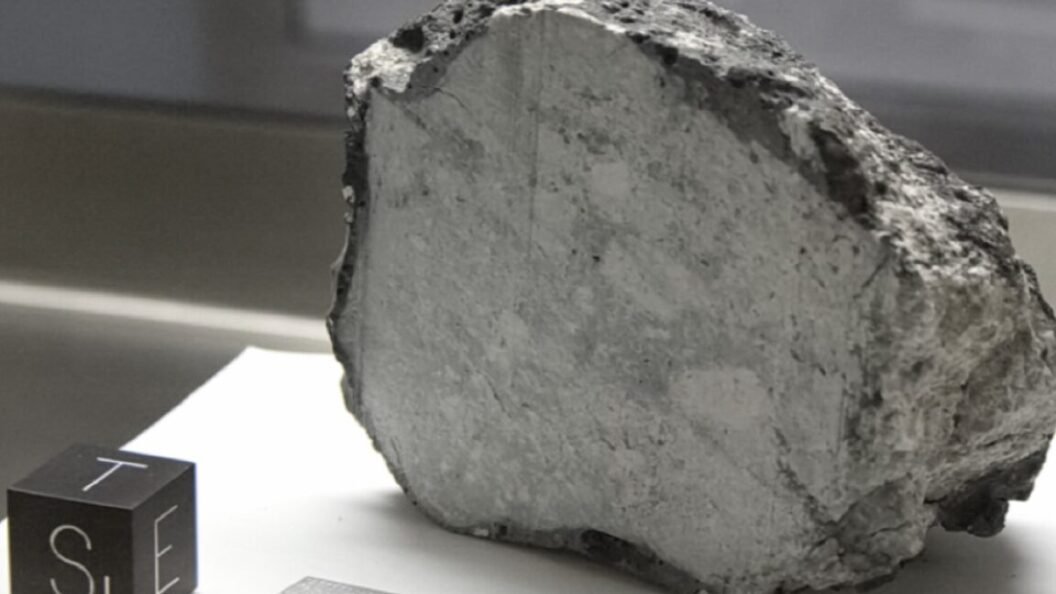Lunar Magnetism: The Mystery Behind Moon Rock Signatures
NASA’s Apollo missions provided a wealth of lunar rock samples, yet a compelling mystery persists: why do certain moon rocks exhibit signs of exposure to strong magnetic fields akin to Earth’s, despite the Moon lacking a significant magnetic field today? Recent research led by scientists at MIT sheds light on this enigma, proposing that a large asteroid impact could have temporarily boosted the Moon’s early weak magnetic field, capturing this spike in some of the lunar samples.
The Current Understanding
The understanding of the Moon’s geological past has evolved significantly through decades of study. Lunar samples from the Apollo missions have shown evidence of a magnetic history inconsistent with the current lack of a substantial magnetic field on the Moon. Observations from orbiting spacecraft and recent findings from prominent Chinese missions, Chang’e 5 and Chang’e 6, support a hypothesis of at least a weak magnetic field during the Moon’s formative years. However, the origin of this magnetic field remains an area of intense research and debate.
Challenges in Explaining Magnetism
Lunar magnetic fields are typically generated by a dynamo effect, where molten metals in a planetary core circulate due to temperature differences. The Moon’s structure complicates this theory; its smaller core and comparatively uniform mantle prevent significant convection that could produce a strong dynamo. Alternative theories have emerged, proposing different mechanisms that could explain the lunar magnetism.
One notable hypothesis from 2022 suggested that during the Moon’s first billion years, it was enveloped in molten rock, leading to the formation of giant rocks as the magma cooled. This cooling process allowed denser minerals to sink towards the core, while lighter minerals contributed to the crust. As this evolution progressed, a titanium layer crystallized beneath the surface. Over time, gravitational overturning of this layer may have created convection currents, momentarily generating magnetic fields recorded in the lunar samples.
Controversy Surrounding Magnetic Signatures
However, not all researchers agree on the necessity of a dynamo-driven magnetic field. A 2021 study questioned previous analyses of lunar samples, suggesting that the magnetic signatures may be the remnants of meteorite or comet impacts rather than intrinsic properties of the moon rocks themselves. By employing CO₂ lasers to heat samples from the Apollo 16 mission, this study aimed to avoid altering the magnetic carriers, drawing conclusions that differ sharply from earlier interpretations.
Current Findings and Implications
The newest evidence from the MIT study emphasizes the role of a transient spike in the Moon’s magnetic field due to a colossal asteroid impact. This hypothesis aligns with ongoing discoveries made by recent lunar missions, framing a more cohesive understanding of the Moon’s geological history. The implications of this research are profound, suggesting that the Moon’s magnetic environment was more dynamic than previously assumed.
Conclusion: The Significance of Lunar Exploration
The exploration of lunar samples offers invaluable insights into the Moon’s formation and evolution, deepening our understanding of Earth-Moon dynamics. Unraveling the mysteries of lunar magnetism not only enhances our knowledge of the Moon but also poses important questions about magnetic field generation in planetary bodies. As research continues, findings from the Moon remain a crucial piece in the larger puzzle of planetary science, with potential ramifications for our comprehension of other celestial bodies in the solar system.
As scientists delve deeper into lunar history, the insights they uncover may not only clarify the Moon’s past but also influence future explorations and our understanding of the universe beyond our planet.









